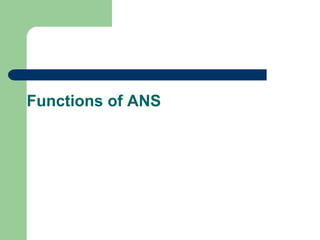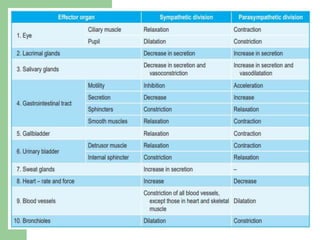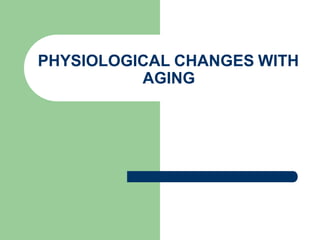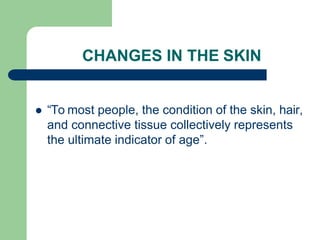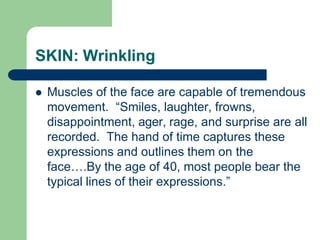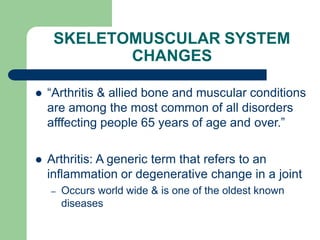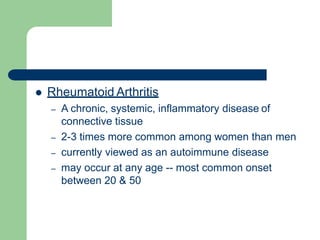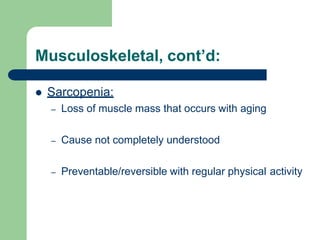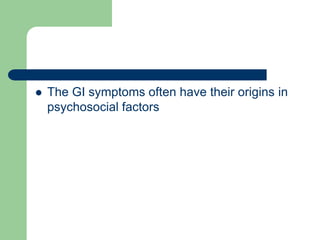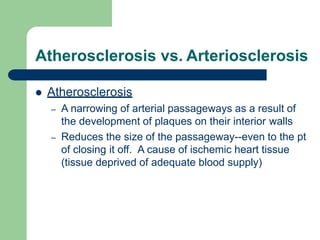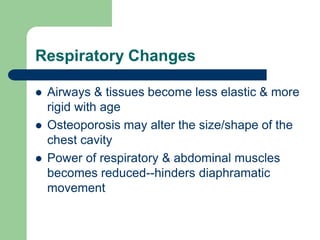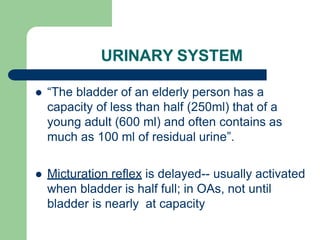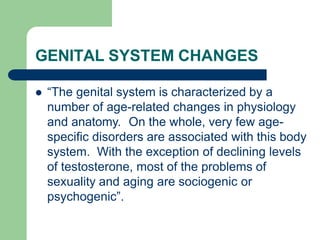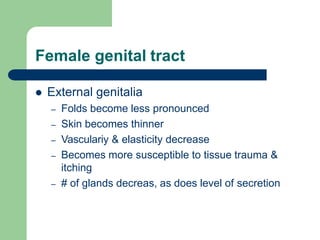Ans
- 3. Comparison
- 5. CHANGES IN THE SKIN “To most people, the condition of the skin, hair, and connective tissue collectively represents the ultimate indicator of age”.
- 6. SKIN: Wrinkling Muscles of the face are capable of tremendous movement. “Smiles, laughter, frowns, disappointment, ager, rage, and surprise are all recorded. The hand of time captures these expressions and outlines them on the face….By the age of 40, most people bear the typical lines of their expressions.”
- 7. SKIN--Wrinkling: Loss of subcutaneous fat – > vulnerability to pressure sores – less insulation of body to cold (also affected by diminished blood flow to skin & extremities) & heat
- 8. SKIN & NAILS Atrophic changes in sweat glands Thickened fingernails & toenails Generalized loss of body hair and head hair Decrease in # of functioning pigment-producing cells-->graying – Some remaining pigment cells enlarge--> “age spots” – Skin changes increase. vulnerability to infections/disorders
- 9. SKELETOMUSCULAR SYSTEM CHANGES “Arthritis & allied bone and muscular conditions are among the most common of all disorders afffecting people 65 years of age and over.” Arthritis: A generic term that refers to an inflammation or degenerative change in a joint – Occurs world wide & is one of the oldest known diseases
- 10. ARTHRITIS Osteoarthritis – Cause not known – Also referred to as degenerative joint disease – A gradual wearing away of joint cartilage that results in the exposure of rough underlying bone ends – Can do damage to internal ligaments – Most commonly associated w/ weight bearing jnts
- 11. Rheumatoid Arthritis – A chronic, systemic, inflammatory disease of connective tissue – 2-3 times more common among women than men – currently viewed as an autoimmune disease – may occur at any age -- most common onset between 20 & 50
- 12. Musculoskeltal, cont’d: Osteopenia --> Osteoporosis: – Gradual loss of bone that reduces skeltal mass without disrupting the proportions of minerals & organic materials – For many, it is asymptomatic – Bones most critically involved: vertebra, wrist, hip
- 13. Musculoskeletal, cont’d: Sarcopenia: – Loss of muscle mass that occurs with aging – Cause not completely understood – Preventable/reversible with regular physical activity
- 14. GASTROINTESTINAL SYSTEM Atophy of secretion mechanisms Decreasing motility of the gut Loss of strength/tone of muscular tissue & supporting structures Changes in neurosensory feedback – Enzyme & hormone release – Innervation of the tract – Diminished response to pain & internal sensations
- 15. The GI symptoms often have their origins in psychosocial factors
- 16. CARDOPULMONARY SYSTEM In the absence of disease, the heart tends to maintain its size Heart valves tend to increase in thickness with age BP tends to go up with age – Systolic stabilizes at about age 75 – Diastolic stabilizes at about 65 then may gradually decline
- 17. Atherosclerosis vs. Arteriosclerosis Atherosclerosis – A narrowing of arterial passageways as a result of the development of plaques on their interior walls – Reduces the size of the passageway--even to the pt of closing it off. A cause of ischemic heart tissue (tissue deprived of adequate blood supply)
- 18. Arteriosclerosis: – A generic term referring to the loss of elasticity of arterial walls – Often referred to as “hardening of the arteries” – Considered a general aging phenomenon
- 19. Respiratory Changes Airways & tissues become less elastic & more rigid with age Osteoporosis may alter the size/shape of the chest cavity Power of respiratory & abdominal muscles becomes reduced--hinders diaphramatic movement
- 20. URINARY SYSTEM “The bladder of an elderly person has a capacity of less than half (250ml) that of a young adult (600 ml) and often contains as much as 100 ml of residual urine”. Micturation reflex is delayed-- usually activated when bladder is half full; in OAs, not until bladder is nearly at capacity
- 21. GENITAL SYSTEM CHANGES “The genital system is characterized by a number of age-related changes in physiology and anatomy. On the whole, very few age- specific disorders are associated with this body system. With the exception of declining levels of testosterone, most of the problems of sexuality and aging are sociogenic or psychogenic”.
- 22. Female genital tract External genitalia – Folds become less pronounced – Skin becomes thinner – Vasculariy & elasticity decrease – Becomes more susceptible to tissue trauma & itching – # of glands decreas, as does level of secretion
- 23. Internatal reproductive organs – Uterus decreases in size & becomes more fibrous – Uterus has fewer endometrial glands – Cervix reduced in size – Uterine tubes become thinner – Ovaries take on an irreguar shape – Ovulation stops--menopause (50% between ages 45 and 50)
- 24. Male Genital System Continues to produce germ cells (sperm) and sex hormones (testosterone) well into old age, declining with advancing age Size & firmness of the testes decrease Reduced sperm production due to age-related fibrosis which constricts the blood supply Fibrosis may also affect the penis since erection is a purely vascular phenomenon
